Don’t Let First Frost Get The Better Of These 9 Plants – Bring Them Indoors Before It’s Too Late!
Once you get to fall, it may only take one frosty night to wreak havoc. If you want to protect plants from frost, bring these 9 half-hardies, perennials and tenders indoors
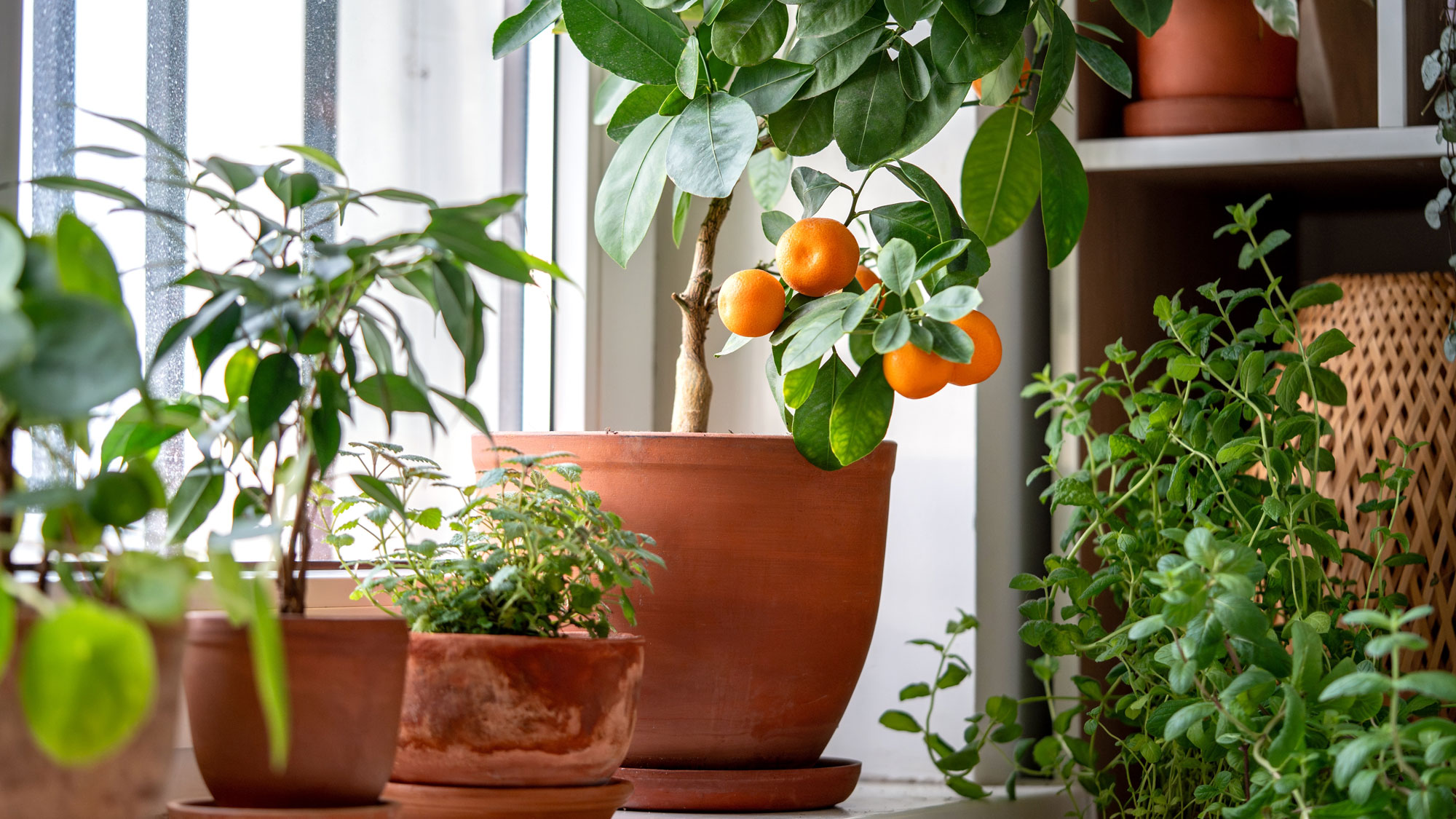

Amy Draiss
As gardeners, it’s easy to get confused in this inbetweeny phase between scorchio summer days and the mulled wine winter weekends of the holidays. The gap between more obvious growing (or lack of growing) conditions can often be laced with doubts, hesitation and second-guessing. Mulling over the best way to protect plants from frost is one such conundrum. It’s not helped by unpredictable weather patterns that maybe hint at future frosty nips, while teasing you with an Indian summer sunny spell or dowsing your beds in buckets of autumnal rain. And how can you confidently prepare for the first frost when it can be such a difficult event to predict, you may well be wondering?
Although you may care about protecting plants from frosts and freezes, mapping out an action plan for relocating favorite perennials, half-hardies, exotics and pot plants may not always be the thing you get round to well ahead of time. Depending on where you live, ‘first frost’ is something that can happen as early as September (in some northern US or high altitude areas), or as late as December or maybe not even at all (in warmer southern states). Factors like altitude and latitude have a part to play, and even whether you live in a built-up, highly populated area. So what should be the top priority?
If you’ve ever grabbed outdoor plants at random in a mild panic as weather reports announced that Jack Frost was on his way, then take a breath, take a beat, and take action now. If you’re interested in protecting plants from frost, these are some of the key plants to move now. Make some room undercover in a clean, well lit space, and follow this checklist to save your tenders, half-hardies and precious perennial pals.
Protect These Plants from First Frost
First of all, if you haven’t already, do get familiar with your likely first frost dates. When is first frost? It is possible to determine this in a way that is pertinent to your specific area, by entering your zip code into a calculator. The Old Farmer’s Almanac has a diamond resource for determining average first frost date predictions based on the National Oceanic and Atmospheric Administration (NOAA) climate data, tailored to your zip. Base my plant suggestions on your USDA hardiness zone, too – is a particular plant hardy to a zone lower than the one in which you live, or are you on the cusp? This can impact your moving strategy.
As well as having a sense of the first expected frost date, consider overall plant health before bringing plants indoors. Inspect carefully for pests and take steps to address any infections before introducing (or reintroducing) them to your indoor plant family. Also, don’t just reposition them in your plush living room – it might be cosy to you, but your plants won’t be used to it, and the dramatic change can be just as much of a shock as a frosty snap. You need to ease them back indoors, finding a place that has similar conditions, but sheltered. It’s like hardening off in reverse, and it’s just as crucial to the health and strength of plants.
Bear in mind some plants are perfectly happy outside and are plenty hardy enough. Relocating those plants abruptly will shock their growth cycles, disrupting dormancy, and causing more harm than good. Stick to plants like those mentioned here that are frost-tender or only marginally hardy for your area. With this info to hand, you can confidently relocate key plants you had out for summer, and those that require precautionary measures and protections for winter. You’ll be grateful you did this before Mr Frost makes pretty patterns on your windows. So if the thermometer has already dipped below 50°F (10°C), there’s no time to lose. Think ahead of the date of first frost, check these plants – and act fast!
1. Citrus
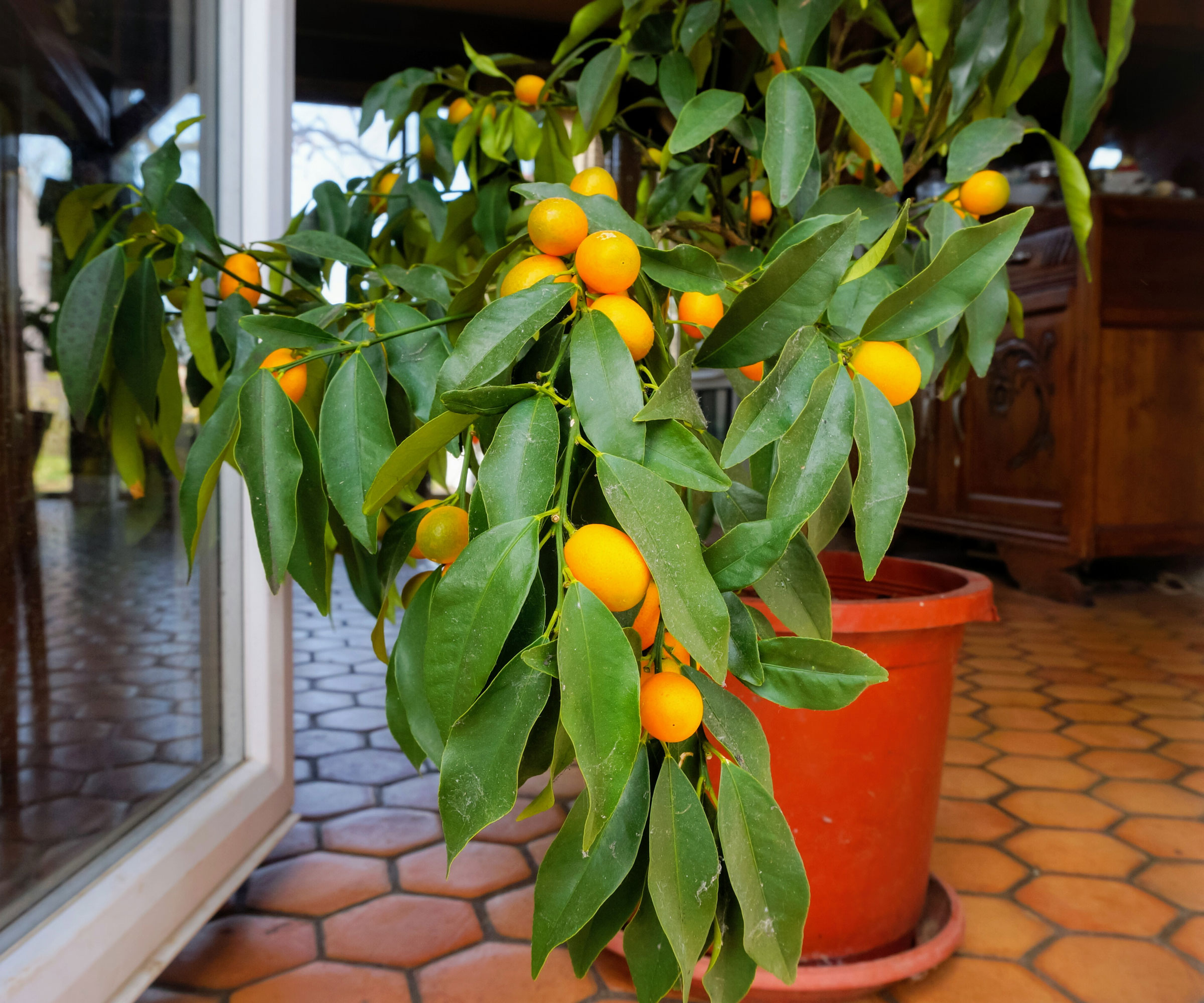
Citrus plants can surprise you, seemingly running on fumes when other fruiting plants have started packing up operations for the year. However, that’s contingent on the right blend of warmth and light lasting beyond the softening rays of autumn. Although some citrus varieties can cope with temperatures in the low single digits (celsius), it’s not a great idea to risk the ravages of tissue damage caused by significant exposure to frost, from which it could take months for the plant to recover, if it even makes it that far. Save yourself that grief and find a safe place indoors for your lemons and limes to dodge that first frost and see out the colder months.
Sign up for the Gardening Know How newsletter today and receive a free copy of our e-book "How to Grow Delicious Tomatoes".
Once temperatures start dropping to 50°F (10°C), reposition them indoors. After a few days of getting them used to being undercover, put them somewhere with a regular temperature of 57-63°F (14-17°C). Ideally, they need plenty of sunlight. Unlike a lot of other plants, they remain active and are likely to keep producing fruits if conditions are agreeable. However, they can’t abide overly dry living conditions, or a spot where they are going to have to grapple with overactive central heating. Keep your citrus well watered – and remember, this is one plant you can feed all year, even once you bring it indoors. Apply a citrus feed like Jack’s Classic Citrus Water-Soluble Feed from Amazon up until October. After that, switch to a general-purpose feed until March.
2. Begonia
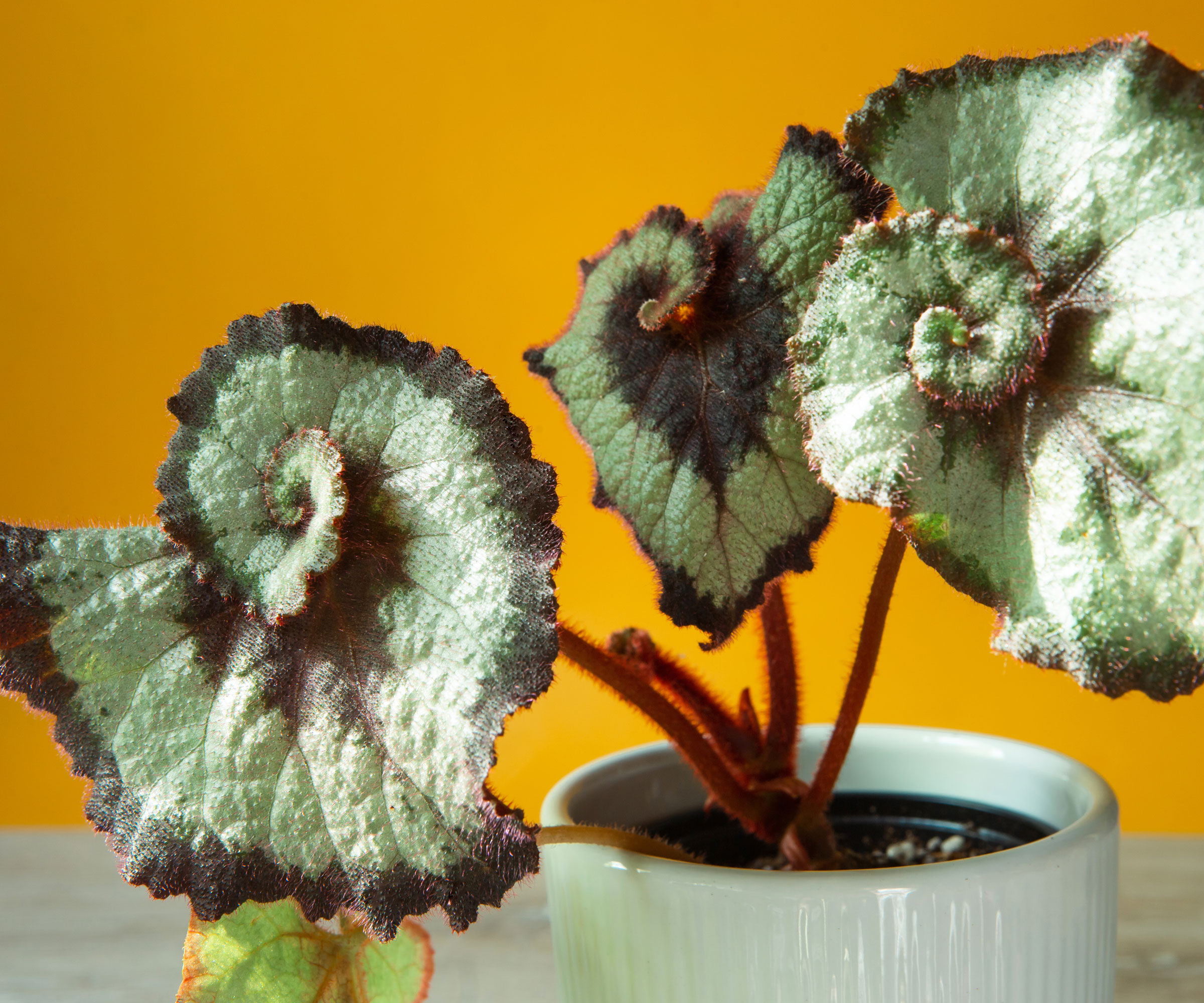
Sensitive? You could say that. One night that wobbles around the 45°F (7°C) mark can signal bad news for quite a few begonias. Some of the Rex varieties look tough as old boots, but don’t let that gruff and crunchy exterior fool you. It only takes one brush with sharp frosty night to have these sensitive souls turning up their toes. There’s a reason they are called tender – so if you want to dodge a bad case of the winter doldrums, bring begonias indoors once the nights start dipping past 50°F (10°C). I’d be tempted to make that move once you’ve seen this happen more than twice.
Specifically, you should be transferring fibrous (wax), Angel wing and Rex begonias indoors that you have had outside over late spring and summer, along with any other predominantly foliage-based varieties. Although exact growing conditions will vary depending on variety, indoor begonias require a place that is relatively cool, free from drafts, and flooded with daylight. Aim for a daytime temperature of 65-75°F (18-24°C), and ideally a slightly lower nighttime temp. A digital thermometer like the ThermoPro TP50 Digital Thermo-Hygrometer Indoor Room Thermometer from Amazon can help you keep an eye on temperatures once begonias are moved indoors.
3. Abutilon
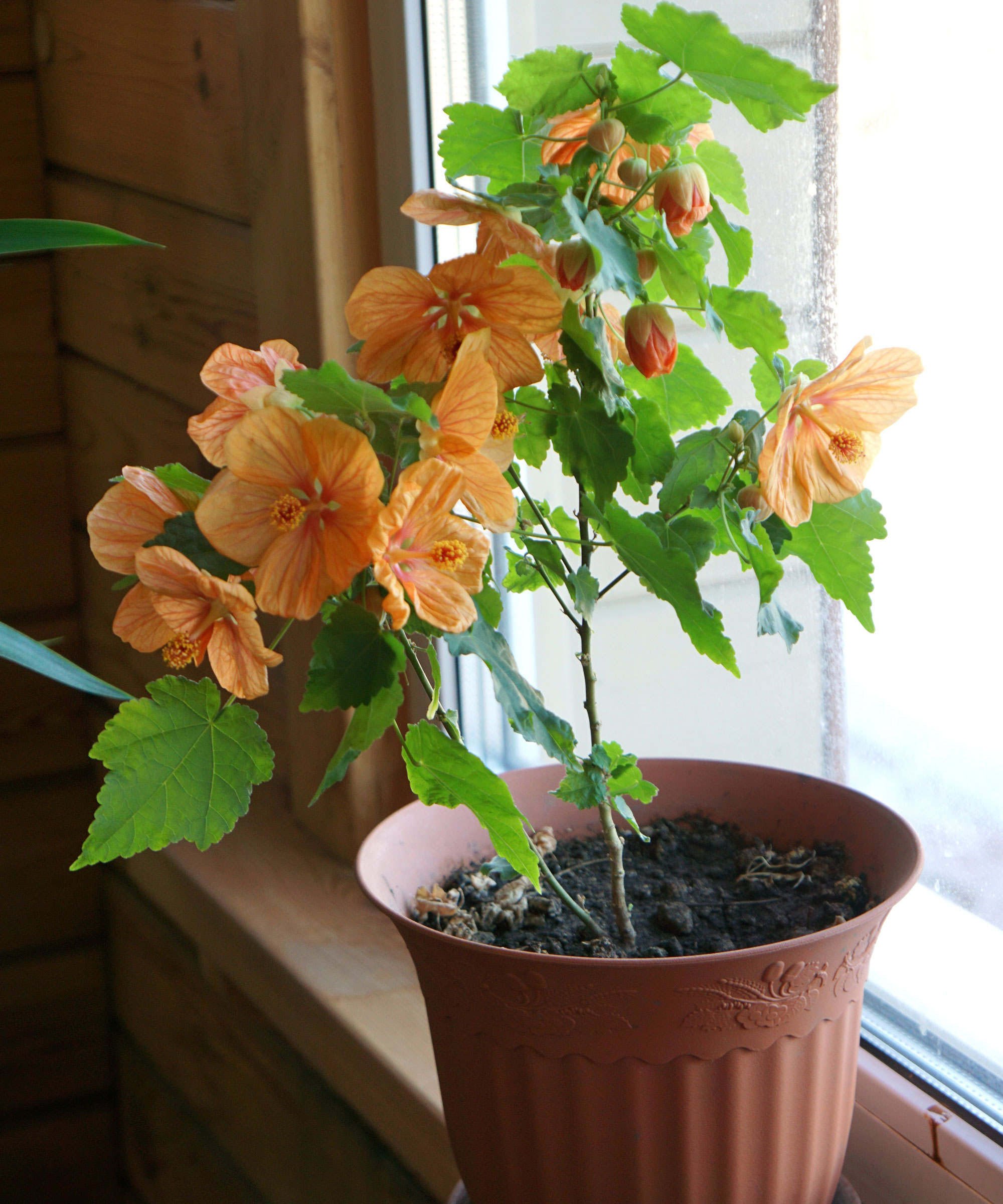
There’s a little variation amongst the many types of flowering maple (abutilon), but several common varieties that soak up the sun in summer are half hardy. These need a little protection on the road into winter, and definitely need to be kept away from frosts. It’s hardly surprising given abutilon’s subtropical origins. If you have a very sheltered outdoor spot like a wall, that may help with some of the more erratic weather that crashes into your neighborhood – but it’s not necessarily going to help with frost.
Yes, certain abutilon varieties are a little less fussy. For instance, Abutilon megapotamicum can handle temp drops to 23°F (-5°C). However, common abutilon varieties are going to flop if the mercury drops into single digits celsius more than a couple of times. My vigorous ‘Emperor’ is very typical here – it’s unfussy for months of summer, but starts getting narky once September chills dance around the backyard. At this point, I treat my abutilon as a houseplant, and site it accordingly.
Where you suspect yours is only hardy to 32°F (0°C), it’s best brought indoors in advance of regular sharp thermometer dips. Find a sunny west facing window with six hours light if you can (I’ve managed to keep mine going near a north west-facing window, even jostling for position with several other winter wanderers). You don’t have to worry about feeding, and can reduce watering. Use the XLUX Moisture Meter for Indoor Pot Plants from Amazon if you need to keep tabs on your pot plants.
4. Rosemary
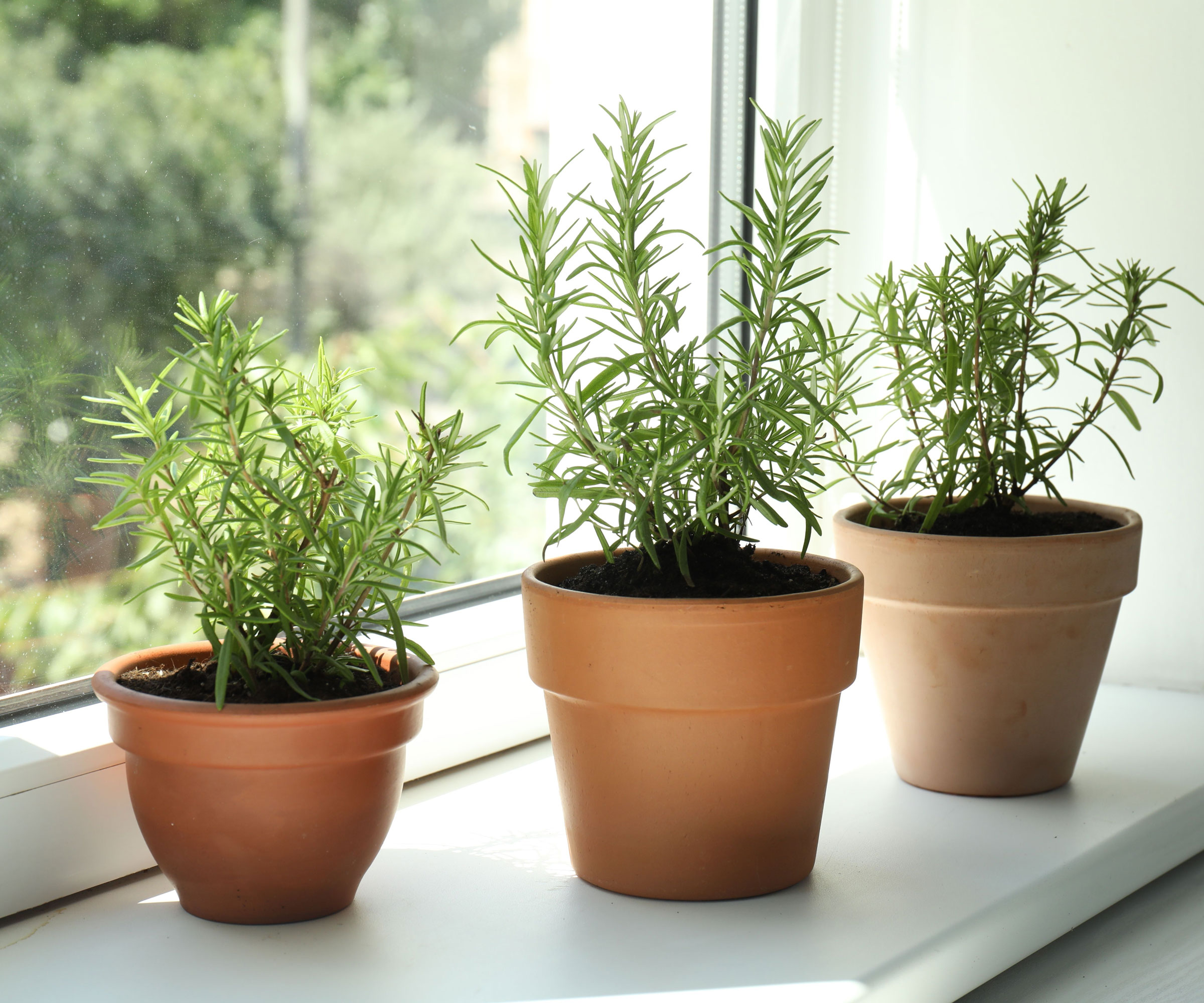
Now I won’t lie, I’ve not always had the best luck with potted rosemary indoors. Placed in the wrong indoor location, this seasoned perennial can struggle if its needs aren’t met. But if it’s a choice between risking a severe weather snap and losing one of my favorite herbs, it’s a no-brainer. You may hear that several types can withstand temp drops as low as 14°F (-10°C) once established. But rosemary is a Mediterranean herb, and not generally the jolliest when dusted with a layer of frost. Ultimately, this woody herb is frost-tender, so it’s important to take steps to protect it from the ravages of a cold snap.
Overwintering your rosemary, done right, can help preserve your precious herbs for another sun-soaked year. I tend to approach this in a multi-pronged fashion. I’ll have already set a few rosemary cuttings off from my outdoor shrub as an insurance policy. But alongside this, I always bring my large container-based rosemary indoors as well. I try to hold off until mid-September, depending on the weather. They can tolerate a little fall-off in the weather, but for rosemary, I’d say that any hint that the temperature is on its way down to 40°F (4°C) is your cue to intervene.
Beyond that, you really don’t want to push your luck and find out exactly how tough your rosemary is, especially if you are based in USDA zone 7 or lower. So to protect plants from first frost, transition your rosemary indoors in the fall, using a garage or shed to acclimate it to the indoors gradually. Keep it somewhere sunny, with average humidity and away from heat vents, and try to maintain a steady temperature between 60-80°F (15.5-26°C). Definitely don’t feed, and reduce watering to prevent root stress. I like to use wiggle worm water sensors like the Worm Water Sensor Hygrometer from Amazon to help me check that water levels in my indoor plants are optimal and well maintained.
5. Caladium
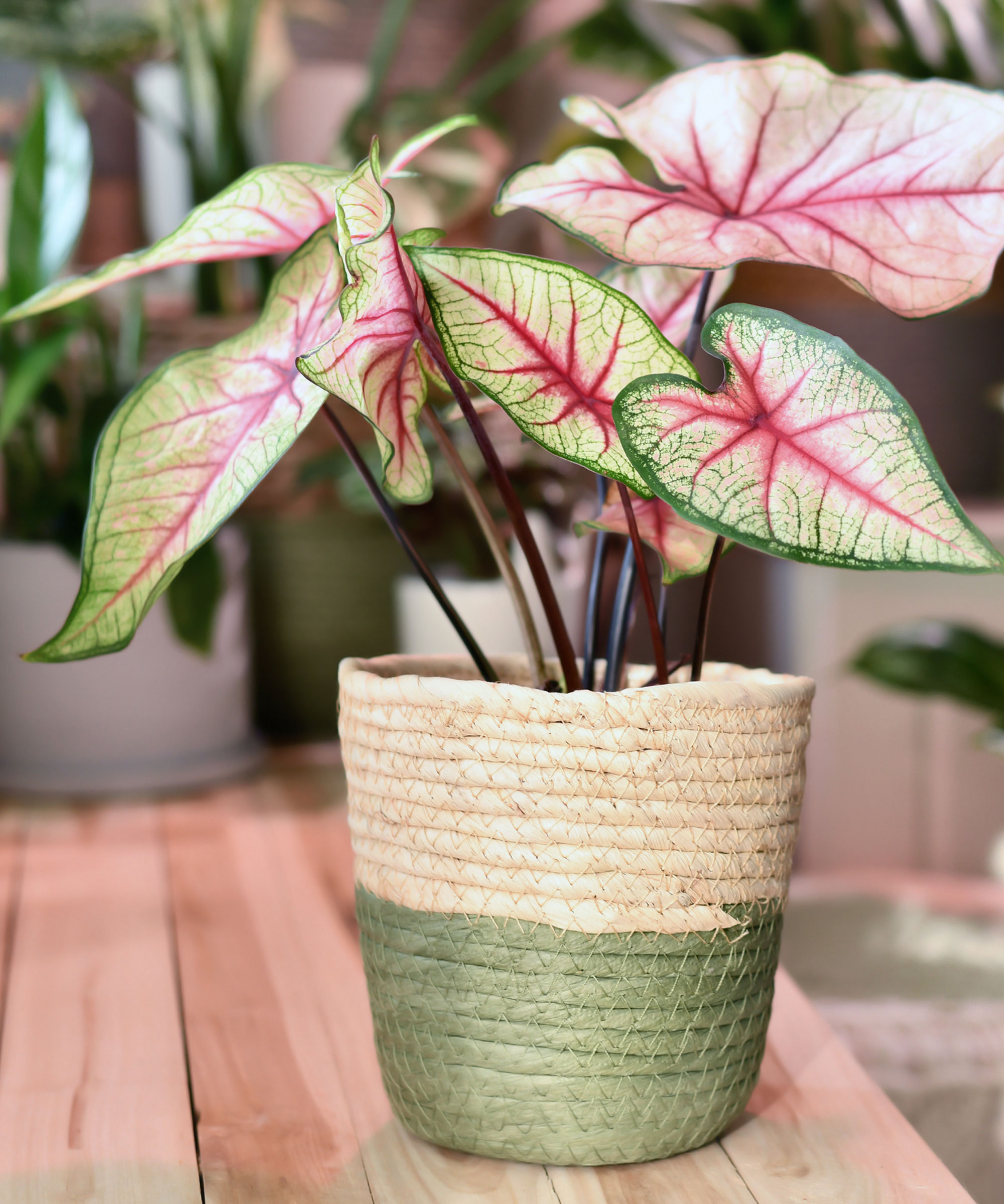
There are a couple of ways to protect frost-sensitive caladiums as fall starts dropping hints about the slides in temperature. You can simply lift the bulbs, let them dry out for a few days, and store them in a warm, dry place until spring arrives. However, once outdoor temperatures start sliding below 54-60°F (12-15°C), it’s also possible to bring them in and treat them as houseplants to extend their color and beauty for longer. If you aren’t in USDA zones 9 or above, you will need to move them one way or another.
Outdoor caladiums that are brought inside will need to be kept out of direct light while you cultivate them as indoor guests. Above all, make sure the indoor spot you choose is warm and humid. Caladiums will need temperatures kept around 65-75°F (18-24°C). They will eventually need a period of dormancy, and even with utmost care, you may see leaves on outdoor leaves turning yellow and dying back. Reduce watering and respect that resting phase so they come back strong next year. To store tubers safely, enfold them in wood shavings or sawdust. Store in a dry carrier like a paper bag or natural fabric pouches like Lucky Monet Hessian Jute Bags from Amazon.
6. Kalanchoe
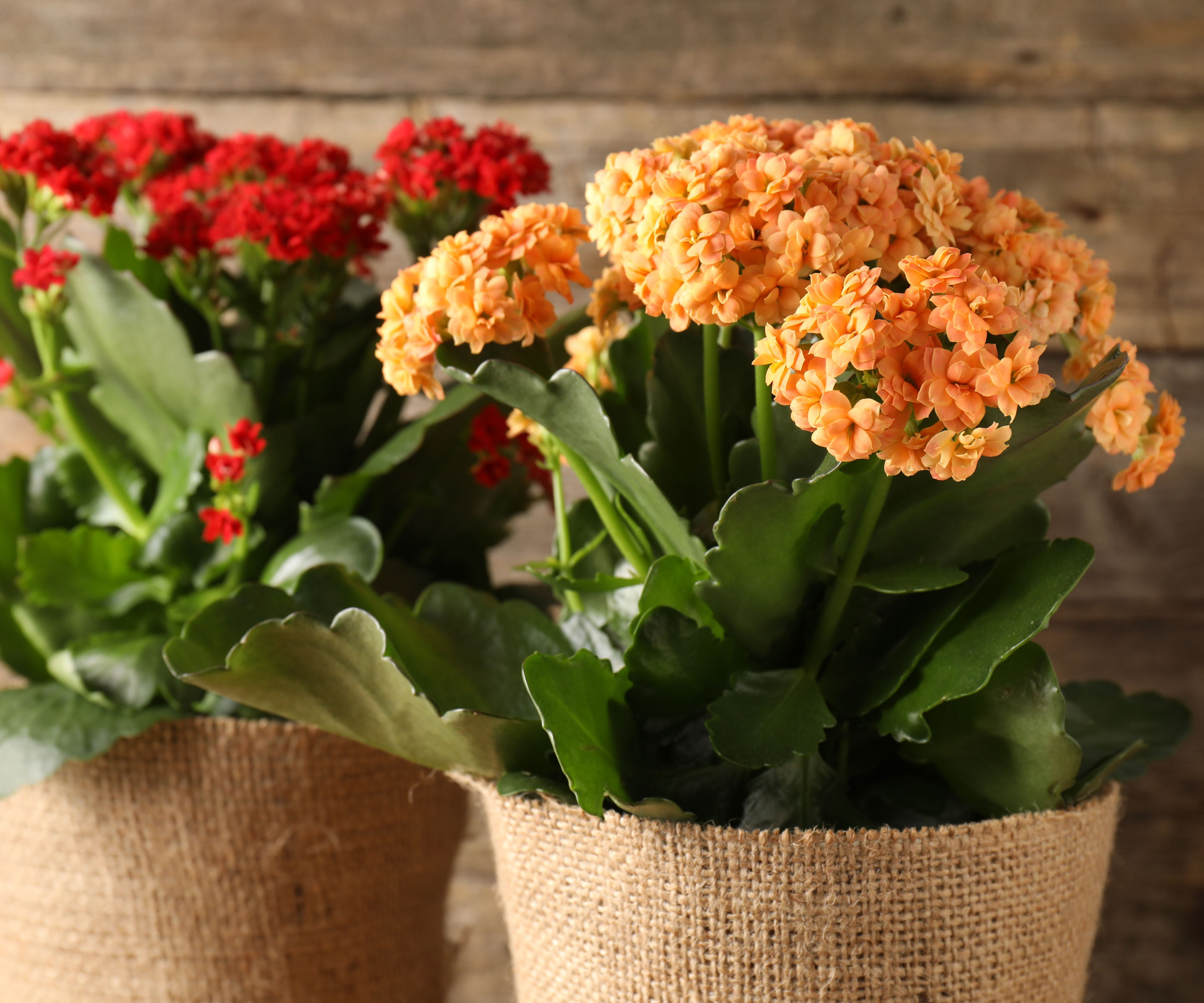
While they are tropical succulents by nature, kalanchoe plants are also very adaptable to indoor living. These colorful beauties can be grown as perennials. Just ensure their scalloped fleshy leaves are not exposed to frosts, and observe a few simple cultural rituals between fall and spring so they perk up again. The warning sign that they need to be brought indoors is slightly higher than for certain other plants – they will start getting grumpy if left outside when nighttime temps drop below 55°F (13°C).
These pretty succulent perennials will be happy enough indoors if you place them in a place with indirect light, preferably near a west-facing window (but not actually placed on the windowsill). They won’t require high humidity levels and they certainly won’t need much water, but they will need to be kept at a regular temperature of 55-80°F (13-27°C). One word of caution if you want your kalanchoe to flower again: they will need at least 12-14 hours of complete darkness for around 6-8 weeks. You can achieve this by placing the plant in a box each night. As a little treat to your kalanchoe chums, cheer things up with some new outer pots like the ArtKetty Succulent Planters from Amazon.
7. Birds of Paradise
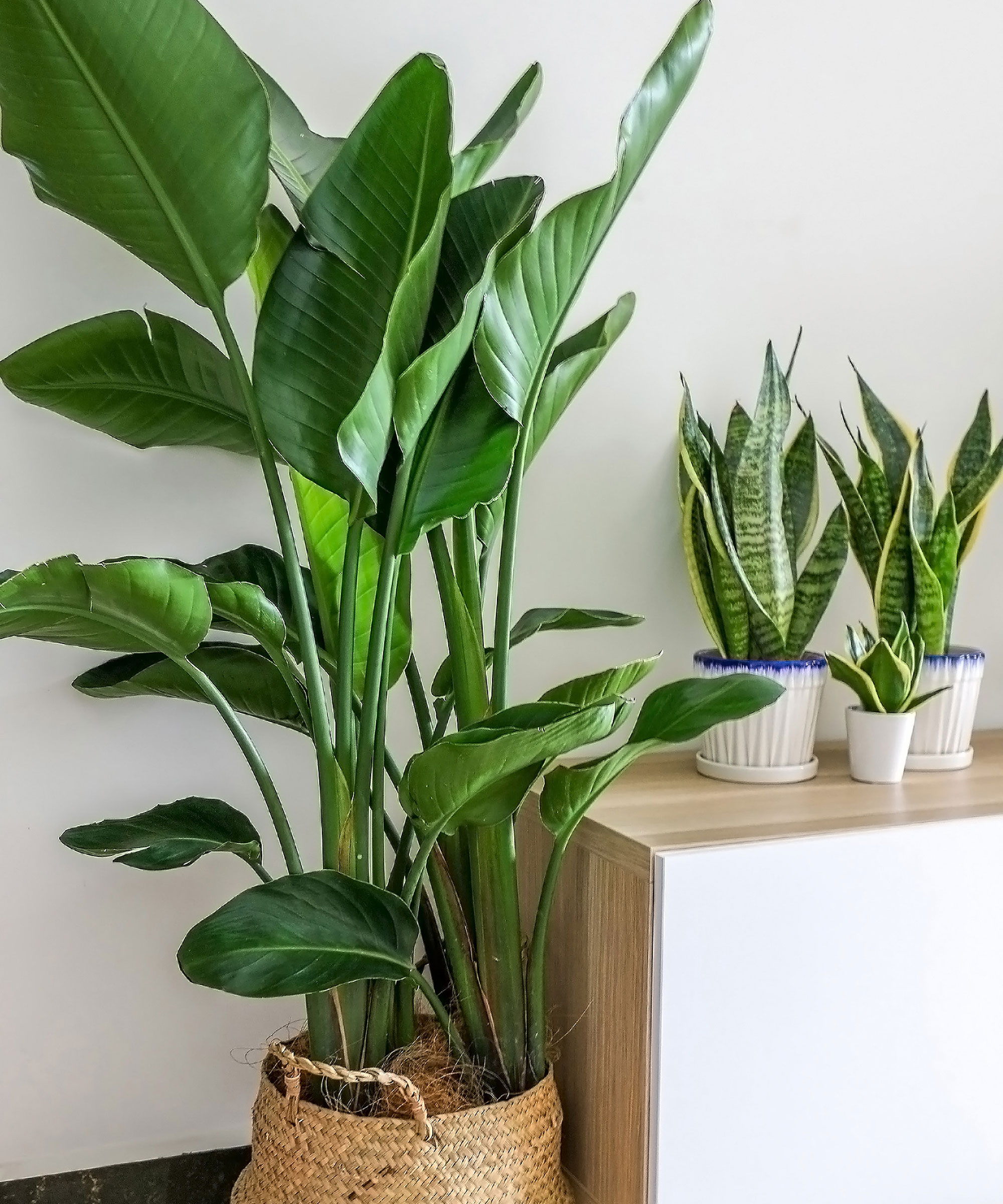
Unless you live in a tropical area, cultivating a happy strelitzia will involve an element of relocation over a typical year. My bird of paradise flourishes outdoors during summer months, nestled happily against a sheltered wall and basking in the afternoon sunshine. Come fall, it’s a different story – and my well behaved birdie needs a change of scene. For anyone who isn’t based in USDA zones 10-12, autumn is a time to start making plans to move most of these frost-sensitive beauties indoors.
If there’s a chance that the mercury is going to drop below 50°F (10°C) in your area, this in itself is a reason to bring your plant indoors. Their tender nature won’t abide prolonged exposure to anything below that level – at best, the cold will stunt or damage flower production. At worst, they could sustain severe tissue damage and give up the ghost. So to protect outdoor plants from frost, bring your container-based strelitzia indoors in the fall and treat them as fancy houseplants until spring is well underway.
A conservatory or greenhouse is ideal, but they can also do well near a sunny window indoors, somewhere you can keep the temperature above 57°F (14°C). I would also take advantage of this move indoors by carefully wiping those sumptuous leaves, which may be dusty after months outdoors. Use dedicated wipes like The Green Alcove Leaf Cleaner & Shine Wipes from Amazon, to restore a lustrous sheen ahead of winter.
8. Passion Flower
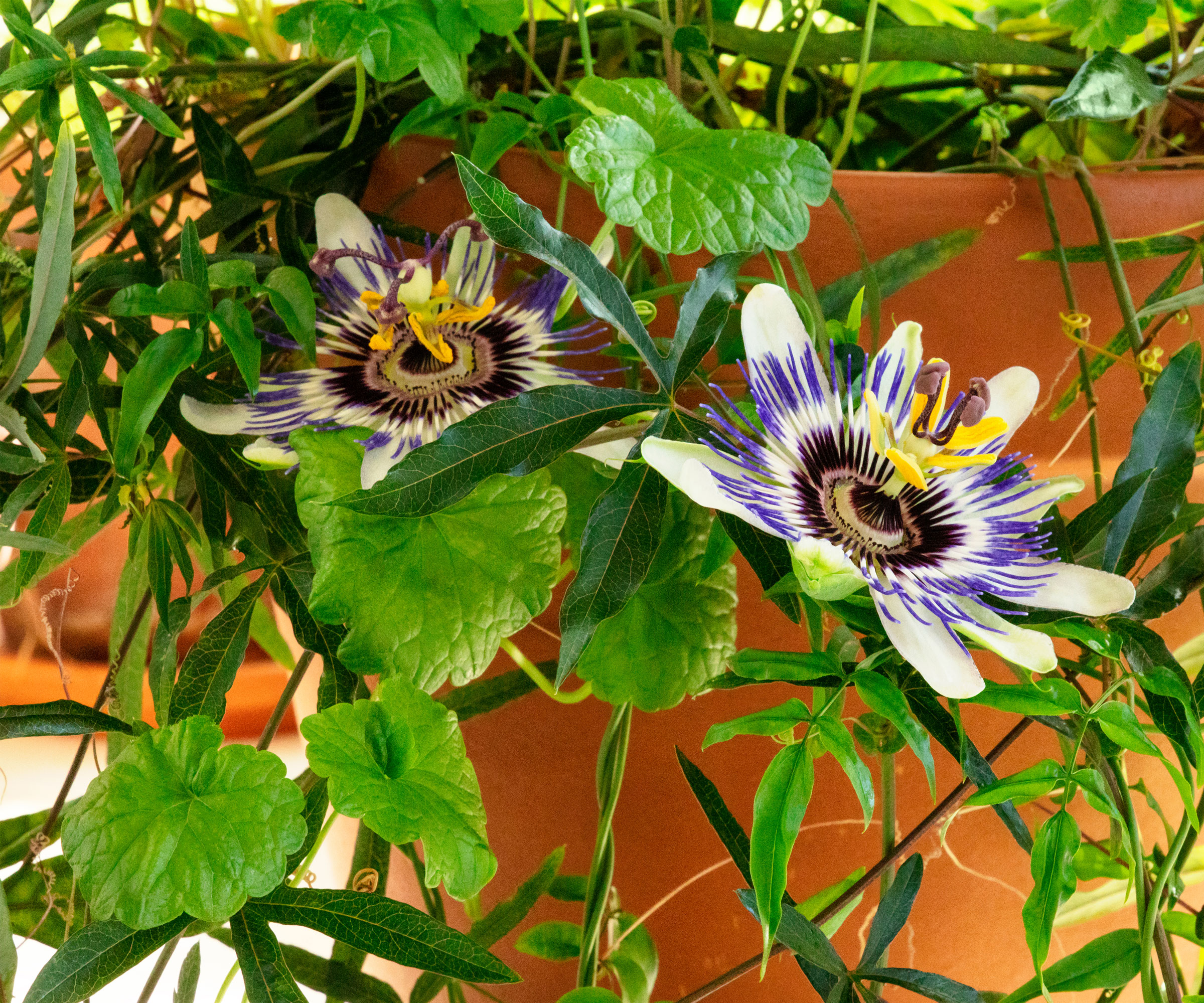
You can get hardy passifloras, like the blue passion flower and the maypop. Indeed, I know of someone growing a blue passion flower a few houses down from me, which stubbornly clings to its wrought iron fence moorings all year round, seemingly oblivious to what the weather throws at it (I once thought it was fake, but it turns out it is real). However, just because some passion flower varieties are hardy, that doesn’t mean you should leave yours to chance as the temperatures drop.
Certain varieties are more frost-sensitive – and if you don’t live in USDA zones 7 or above, you should definitely make plans to relocate yours indoors before the first frost. Choose a bright spot indoors with high levels of humidity and a regular daytime temperature of 70-85°F (16-29°C), dropping no colder than 60°F (16°C) at night. It’s a good idea to trim stems to 2ft (60cm) to encourage robust growth in spring.
If you are based in USDA zones 7 or above, and you can get away with keeping your passion flowers outside over winter, it’s still worth giving the root systems of hardy varieties a little extra protection. Where this applies to you, be sure to add a layer of mulch around your passion flower plants. I love Back to the Roots Organic Premium Mulch from Amazon, with a thoughtful blend of yucca extract and gypsum to help balance water levels as well as provide insulation to roots.
9. Pelargonium
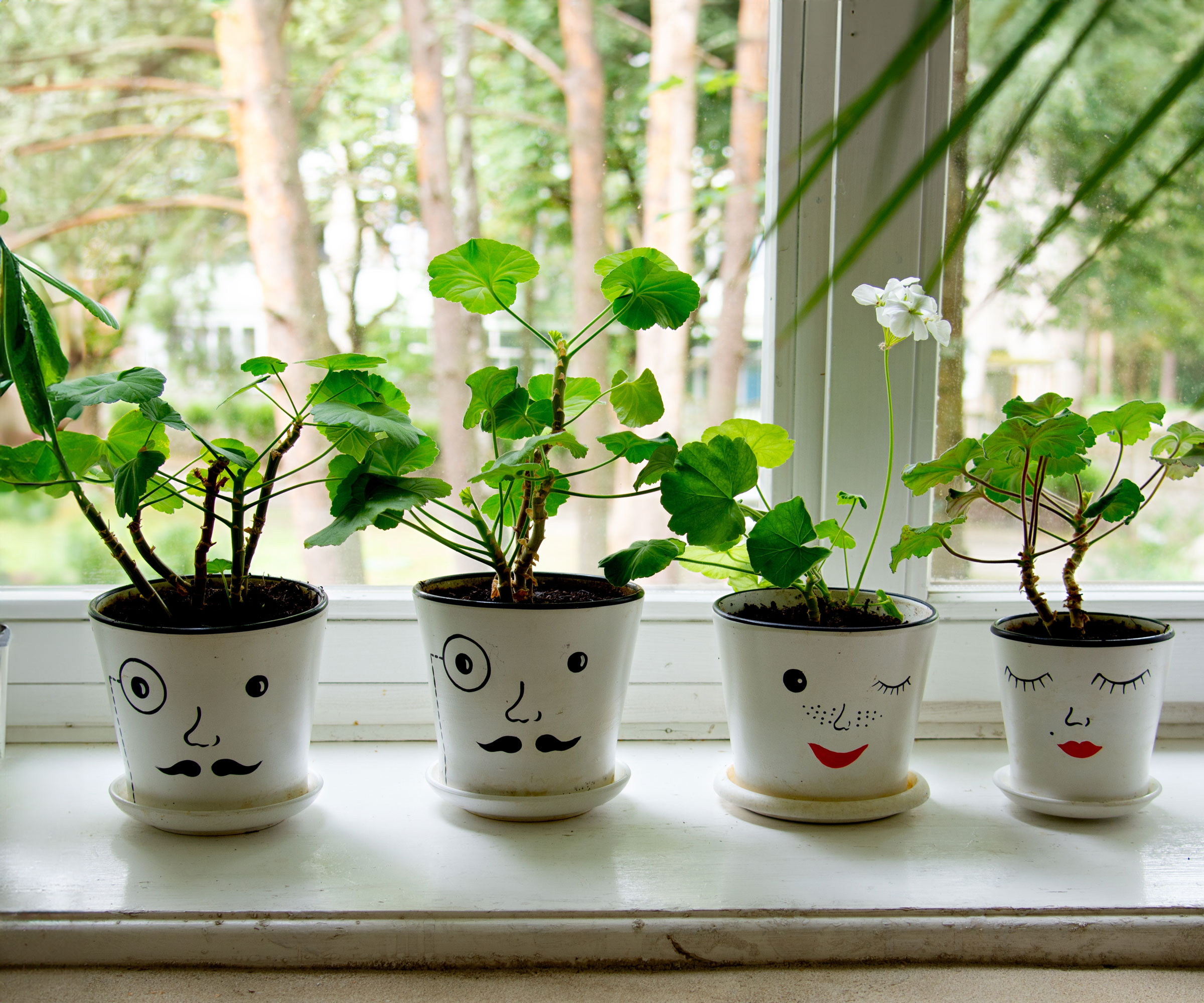
If there’s one plant group that seems to fill more corners of my house every winter, it’s the pretty (and often delectably scented) pelargonium family. These plants are the quintessential half-hardy perennials, and being frost-tender puts them high on the list of priorities for relocation ahead of first frost. Put simply, pelargoniums will die if exposed to frost. Considering their many months of service and their potential for years more of the same, it’s unthinkable to leave them to the whims of the elements as long as you have a spot indoors to accommodate them.
To protect potted plants from frost, keep an eye out for outdoor night temperatures starting to nudge down towards 48-50°F (8-10°C). I tend to make cuttings towards the end of summer, and a greenhouse is also fine for potted pelargoniums (if you have one) – but moving them into the home is a highly agreeable way to keep adult plants going. Ideally, keep a steady temperature between 64-72°F (18-22°C). Don’t forget to get plants used to the indoors by keeping them somewhere like a garage for a few days first.
While you don’t have to worry about feeding or regular watering over winter, the one thing that can guarantee happier pels in the new year is a strong and steady supply of light. If natural light sources are going to be a struggle, it’s well worth investing in a grow light to keep your sun-thirsty pels happy (they’re going to need at least 6 hours a day in order to thrive). Try an adjustable model like the AeroGarden Trio Grow Light from Amazon to ensure they are in the best form come spring.
Need more ideas for timely gardening jobs and seasonal expert advice delivered straight to your inbox? Sign up for the free Gardening Know How Newsletter!

Janey is a former assistant editor of the UK’s oldest gardening magazine, Amateur Gardening, where she worked for five years. For the last few years, she has also been writing and editing content for digital gardening brands GardeningEtc and Homes & Gardens. She’s taken part in a range of conservation and rewilding projects for the Royal Horticultural Society (RHS) and the British Trust for Conservation Volunteers (BTCV) as a way of exploring her horticultural horizons. She is currently undertaking her RHS Level 2 certificate in The Principles of Plant Growth and Development.
- Amy DraissDigital Community Manager